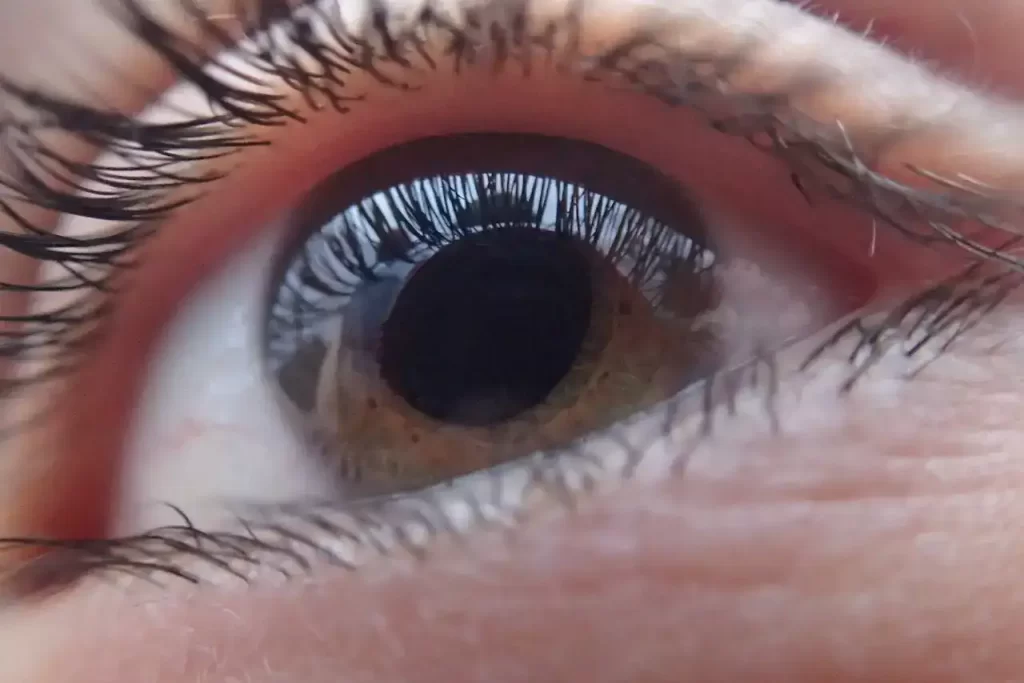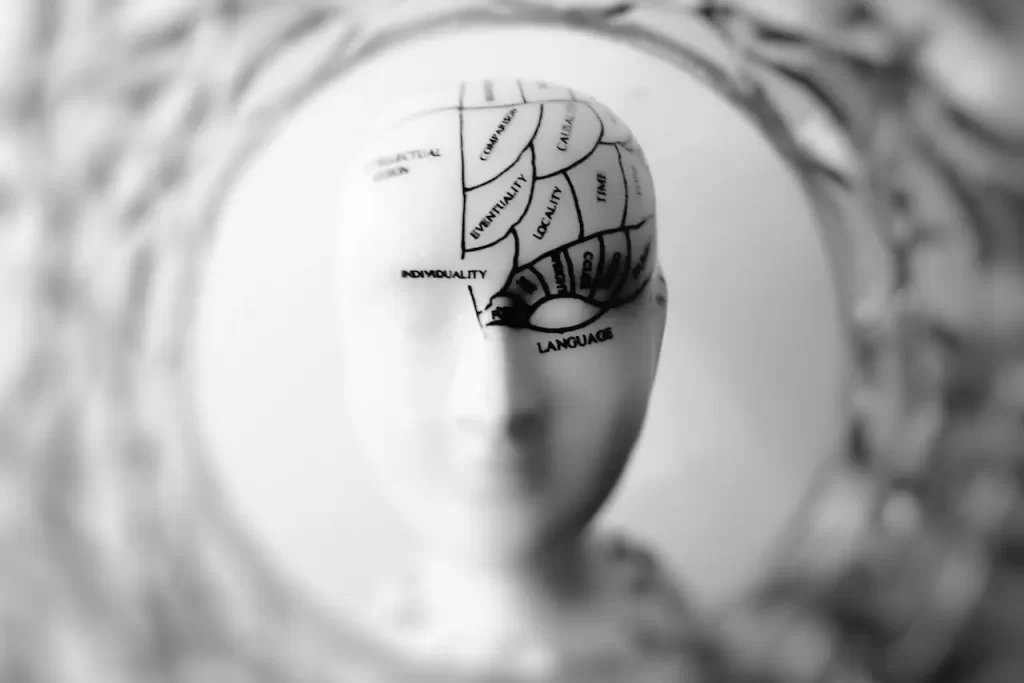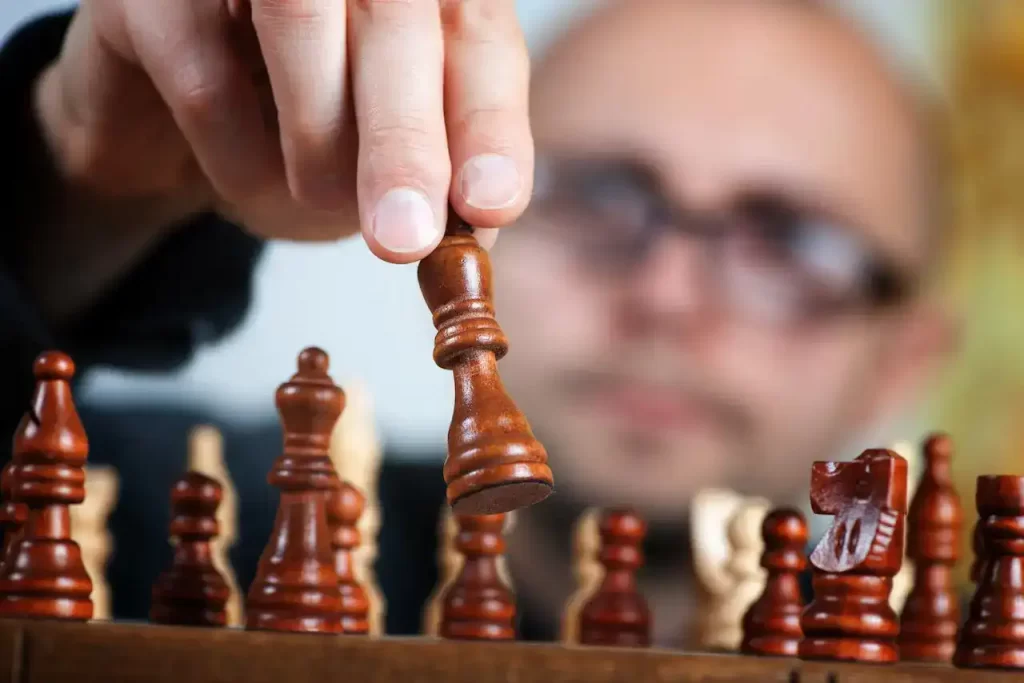Have you ever wondered how understanding psychology can be helpful in your daily life? Well, let me tell you, it can be incredibly beneficial. Psychology is the scientific study of human behavior and mental processes, and it can help you understand yourself and those around you in a more profound way.
By understanding psychology, you can gain insights into how people think, feel, and behave, which can be especially useful in your personal and professional relationships. For example, if you understand the principles of communication and persuasion, you can communicate more effectively with your partner, friends, and colleagues, and be more persuasive in your arguments.
Moreover, understanding psychology can help you cope with stress and adversity. It can provide you with valuable tools and techniques for managing your emotions, improving your self-esteem, and building resilience. By understanding your own thoughts and feelings, you can become more aware of your strengths and weaknesses, and take steps to improve your well-being.
In short, understanding psychology can help you live a happier, healthier, and more fulfilling life. Whether you’re dealing with relationship problems, career challenges, or personal struggles, psychology can provide you with the knowledge and skills you need to navigate life’s ups and downs more effectively. So, if you’re curious about psychology, keep reading, and discover how this fascinating field can enrich your life in countless ways.
Information Cascades
Have you ever found yourself going along with the crowd, even if you didn’t really agree with their opinions or actions? Or maybe you’ve seen a group of people make a decision that seems completely irrational, yet everyone seems to be on board. These are both examples of information cascades, a phenomenon in psychology that can have a big impact on our daily lives.
So what exactly is an information cascade? Essentially, it’s when people base their decisions on the decisions of others, rather than on their own thoughts and opinions. This can happen for a variety of reasons, such as a desire to fit in with a group or a belief that others must know something we don’t. When one person makes a decision, others may follow suit simply because they assume that person knows what they’re doing.
Information cascades can have a particularly strong effect on decision-making in groups. For example, let’s say you’re in a meeting with a group of colleagues and someone suggests an idea that you’re not sure about. However, everyone else seems enthusiastic about it and starts discussing how it could work. You may feel pressure to go along with the group and not voice your own concerns, even if you think the idea isn’t really a good one.
This is where information cascades can become problematic. When people ignore their own thoughts and opinions in favor of following others, it can lead to poor decision-making and missed opportunities. It’s important to remember that just because others seem to be on board with something, it doesn’t necessarily mean it’s the right choice. By understanding information cascades and being aware of how they can affect our decision-making, we can make more informed choices and avoid getting swept up in groupthink.
Peak-End Impressions
Have you ever heard of the peak-end effect? It’s a psychological phenomenon that can greatly influence how we remember events and make judgments about them. Let me explain.
The peak-end effect refers to the fact that we tend to remember the peak and the end of an experience more vividly than any other part of it. This means that if an event has a particularly intense moment or a satisfying conclusion, that will have a disproportionate impact on our memories of the entire experience.
For example, let’s say you go on a rollercoaster. The majority of the ride might be relatively tame, but if there’s one especially steep drop towards the end, that will likely be the moment you remember most vividly. Similarly, if you go to a concert and the final song is particularly powerful, that will leave a lasting impression on you, even if the rest of the concert was just okay.
So why does this matter? Well, it means that we may make judgments about events based on how we remember the peak and the end, even if those moments were not truly representative of the experience as a whole. This can lead to biased opinions and decisions.
For example, imagine you’re evaluating a job candidate. If they make a great impression in the first few minutes of the interview and then finish strongly, you might be inclined to rate them more highly overall, even if their performance in the middle was lackluster. Similarly, if you’re trying to decide whether to attend a particular event or not, your decision might be swayed by how memorable you expect the peak and end to be, even if the rest of the experience is average.
So, it’s important to be aware of the peak-end effect and to consciously consider the entirety of an experience when making judgments or decisions. Don’t let biased memories or impressions cloud your judgment!
Belief Bias
Belief bias is the tendency for people to judge the strength of arguments based on whether or not they agree with the conclusion. This means that even if an argument is logically flawed, people will be more likely to accept it if it aligns with their pre-existing beliefs.
A study conducted by psychologists found that this tendency is particularly pronounced when people are making snap decisions. In the study, participants were presented with syllogisms, or logical arguments, that either supported or contradicted their existing beliefs. The participants were then asked to judge the strength of the arguments. When making quick decisions, participants were more likely to judge arguments that supported their beliefs as strong, even when the arguments were flawed.
Belief bias can affect even well-educated people, who may be more likely to engage in complex reasoning and rationalization. When presented with a complex argument that contradicts their beliefs, people may engage in motivated reasoning to find flaws in the argument or to discredit the source of the argument. This can lead to a lack of critical thinking and an inability to consider alternative perspectives.
Belief bias can have significant consequences in a variety of contexts, from politics to science. For example, if someone is presented with evidence that contradicts their political beliefs, they may be less likely to accept the evidence as valid, which can contribute to the spread of misinformation and a lack of consensus on important issues. Similarly, if scientists have pre-existing beliefs about a particular phenomenon, they may be more likely to interpret data in a way that confirms their beliefs, which can lead to faulty conclusions and a lack of progress in the field.
Automation Bias
Have you ever found yourself trusting technology more than your own intuition? That’s what’s known as automation bias, a phenomenon where people tend to blindly trust automated systems or technology and make decisions based solely on their output, without critically evaluating the information.
This kind of bias can be especially dangerous in situations where critical decisions are made based on automated information, like in aviation or healthcare industries. In such cases, human operators may become complacent and fail to detect errors or problems in automated systems. This can lead to catastrophic outcomes.
Studies have found that people are more likely to trust automated information even when it conflicts with their own knowledge or intuition. This is because automation bias is driven by a deep-seated human tendency to trust machines and systems that are seen as objective and unbiased.
One of the potential consequences of automation bias is a loss of expertise. If people become too reliant on automated systems, they may lose their own skills and knowledge. This can lead to a situation where people become less able to detect and correct errors, making them more vulnerable to mistakes and accidents.
In conclusion, automation bias is a real and concerning issue in modern society. It highlights the need for people to be aware of their own biases and to develop critical thinking skills that allow them to evaluate information from all sources, including automated systems. By doing so, we can ensure that we make better decisions and avoid potentially catastrophic outcomes.
Pygmalion Effect
Have you ever been told that you can’t do something, and then found yourself struggling to accomplish that task? Or have you been given a lot of positive feedback and found that you’re able to perform better than you expected? If so, you’ve experienced the Pygmalion Effect.
The Pygmalion Effect is a phenomenon where a person’s performance is influenced by other people’s expectations of them. In other words, if someone expects you to perform well, you’re more likely to do so. Conversely, if someone expects you to perform poorly, you’re more likely to struggle.
This effect has been demonstrated in many different contexts, from education to the workplace. For example, a teacher who believes that a student is capable of achieving high grades is more likely to provide that student with challenging material and feedback that will help them improve. The student, in turn, is more likely to work hard and perform well on exams.
On the other hand, if a teacher believes that a student is not capable of achieving high grades, they may give that student easier material or less constructive feedback. This can create a self-fulfilling prophecy, where the student performs poorly because they’re not given the resources they need to succeed.
The Pygmalion Effect is not limited to the classroom, either. In the workplace, managers who believe that their employees are capable and motivated are more likely to give them challenging assignments and opportunities for growth. Conversely, managers who believe that their employees are lazy or incompetent may be less likely to provide them with these opportunities, which can lead to low morale and poor performance.
Overall, the Pygmalion Effect highlights the importance of positive expectations and feedback. By believing in someone’s abilities and providing them with the resources they need to succeed, we can help them reach their full potential.
Ironic Process Theory
Have you ever been told not to think about something, but then found yourself obsessively thinking about it? That’s the ironic process theory in action. It’s the idea that when we try to suppress thoughts or feelings, we actually end up experiencing them more intensely.
This can manifest in many ways in daily life. For example, when you’re trying to fall asleep but keep telling yourself not to think about anything, suddenly your mind starts racing with thoughts. Or when you’re on a diet and try to avoid thinking about your favorite foods, you find yourself fixating on them even more.
The ironic process theory has important implications for mental health. For example, if someone is struggling with anxiety, telling them to “just relax” can actually make things worse. By telling them not to think about their worries, you may be inadvertently increasing their anxiety.
It’s also important to note that the ironic process theory isn’t just about thoughts. It can also apply to feelings. For example, if someone is feeling sad and tries to suppress their emotions, they may end up feeling even more depressed.
Overall, the ironic process theory reminds us of the importance of acknowledging and accepting our thoughts and feelings, rather than trying to suppress them. By being aware of this phenomenon, we can work to better manage our thoughts and emotions in a healthy way.
Worse Than Average Effect
Have you ever felt like you were worse than the average person at something? You’re not alone. This feeling is called the “worse-than-average effect.” It refers to the tendency of people to believe that they are worse than others at a particular task or skill, even when they are objectively just as good as or better than others.
So why do we tend to think this way? One reason is that we often compare ourselves to those who are more skilled or accomplished than us. For example, if you are an amateur basketball player, you might compare yourself to professional players and feel like you are not as good. However, it’s important to remember that professional players are the exception, not the rule.
Another reason for the worse-than-average effect is our tendency to focus on our weaknesses rather than our strengths. We may be great at many things, but we tend to fixate on the things we struggle with. This can lead to a skewed perception of our abilities and cause us to doubt ourselves unnecessarily.
The worse-than-average effect can be damaging to our self-esteem and motivation. If we believe we are not as good as others, we may feel discouraged and less motivated to improve. This can become a self-fulfilling prophecy, where our belief in our inferiority becomes a reality.
To combat the worse-than-average effect, it’s important to focus on our strengths and accomplishments. We should celebrate our successes and recognize the progress we have made. We should also remember that everyone has strengths and weaknesses, and that it’s okay to not be the best at everything.
The worse-than-average effect can be a real hindrance to our confidence and motivation. By recognizing our strengths and celebrating our accomplishments, we can overcome this cognitive bias and achieve our goals. Remember, you are more capable than you think!
False Memory
Have you ever been absolutely certain that something happened to you, only to later discover that your memory was inaccurate? Maybe you remembered a conversation or event in vivid detail, only to learn that it never actually took place. This phenomenon is known as a false memory, and it can have significant consequences in our daily lives.
A false memory is a recollection of an event or experience that did not actually occur or occurred in a way that is different from how we remember it. False memories can be created in a number of ways, such as through suggestion or repetition, and can be reinforced by other memories or information.
For example, let’s say that you and your friends are reminiscing about a childhood experience. As you listen to their stories and share your own, you might start to remember things that never actually happened. Over time, these false memories can become more vivid and feel just as real as genuine memories.
False memories can have a significant impact on decision-making and behavior. For example, if you are falsely convinced that someone has wronged you, you might be more likely to hold a grudge or act out in a way that is not warranted by the situation. False memories can also have legal implications, such as in cases of eyewitness testimony, where a person’s memory may be influenced by suggestion or other factors.
It’s important to be aware of the potential for false memories and to take steps to minimize their impact. One way to do this is to seek out objective evidence when possible, rather than relying solely on memory. It’s also important to be open to the possibility that our memories may not always be accurate, and to seek out alternative explanations when our recollections do not match up with those of others.
Faces In The Clouds
Have you ever looked up at the clouds and thought you saw a familiar shape or face? This phenomenon is known as “faces in the clouds,” and it’s a perfect example of how our brains can create patterns and images out of random stimuli.
Faces in the clouds is a psychological concept that refers to the human tendency to perceive faces in objects or patterns that are not actually faces. This phenomenon is also known as pareidolia, and it can occur when our brains try to make sense of ambiguous or incomplete information.
For example, when we look at clouds, we may see a face, an animal, or even a famous landmark. In reality, there are no definitive features or lines that make up these images. However, our brains try to make sense of the shapes we see and create patterns that resemble familiar objects.
This phenomenon is not limited to clouds, as it can occur in many different contexts. People have reported seeing faces in everything from trees to toast, and even in electrical outlets!
While it may seem harmless, this psychological phenomenon can have some serious consequences. In some cases, people may see faces or patterns that are not actually there, which can lead to anxiety, fear, or even paranoia.
Additionally, the faces in the clouds phenomenon can also be exploited by marketers and advertisers. By using images or patterns that resemble faces, they can influence our subconscious and make us more likely to remember their brand or product.
Overall, the faces in the clouds phenomenon is just one example of how our brains can create patterns and images out of random stimuli. It’s a reminder that our perceptions are not always accurate, and that we should be aware of the potential influence of our surroundings on our thoughts and behaviors.
Familiar Road Bias
Have you ever noticed that when you drive a familiar route, you can easily miss a turn or forget where you’re going? This is a common phenomenon known as familiar road bias.
Familiar road bias occurs when we rely on our past experiences and habits to guide our behavior, even when they may not be appropriate for the current situation. For example, when driving a familiar route, we may become so accustomed to taking the same turns and following the same landmarks that we fail to notice changes in the road or other important information.
This bias can have serious consequences, such as causing accidents or getting lost. It can also lead to missed opportunities, as we may overlook new or different routes that could be faster or more efficient.
One study on familiar road bias found that it can be especially strong when we are in a hurry or under stress. When we feel rushed or anxious, we may be more likely to rely on our automatic behaviors rather than engaging in conscious thought and decision-making.
To combat familiar road bias, it’s important to stay alert and pay attention to your surroundings, even when driving a familiar route. Try to vary your route occasionally to keep your brain engaged and avoid falling into automatic habits. Additionally, taking breaks or practicing relaxation techniques can help reduce stress and anxiety, which can contribute to this bias.
Digital Amnesia
Have you ever experienced that moment when you try to recall a phone number you’ve known for years, only to realize you’ve forgotten it? Or when you can’t remember the directions to a place you’ve been to many times before? If so, you might have experienced a phenomenon called digital amnesia.
Digital amnesia is the inability to remember information that we rely on technology to store or remember for us. In other words, when we trust technology to remember information, our own memory capacity can weaken. For example, we might store phone numbers, addresses, or even passwords on our phones, and then forget them without even realizing it.
While technology can be a great tool, relying too much on it can have negative consequences. Not only can it lead to digital amnesia, but it can also make us less resourceful and creative. For example, if we always rely on GPS to navigate, we might not develop our sense of direction or spatial awareness.
Moreover, digital amnesia can impact our ability to learn and retain new information. When we don’t make an effort to memorize information, our brain doesn’t get the exercise it needs to retain that information long-term. This can also impact our problem-solving skills and critical thinking ability.
So what can we do to avoid digital amnesia? One solution is to limit our reliance on technology for certain tasks, like memorizing phone numbers or remembering directions. Instead, try to use your brainpower to remember these things. Another solution is to use technology as a tool to help you learn, rather than a crutch to rely on. For example, you could use flashcards to study information, rather than relying on a digital quiz app.
While technology can be a great aid in our daily lives, it’s important to be mindful of how much we rely on it. By being aware of the potential for digital amnesia, we can take steps to strengthen our memory capacity and problem-solving skills, and become more resourceful and creative in the process.
Dysrationalia
Have you ever met someone who just can’t seem to make a rational decision, no matter how much information they have? Maybe they always seem to fall for scams or make poor investments. This is a phenomenon known as dysrationalia, and it can be frustrating to deal with.
Dysrationalia is essentially a failure to think logically and make rational decisions. It’s not the same as being unintelligent or uneducated – many people with dysrationalia are highly intelligent and well-educated. Instead, it’s a cognitive bias that makes it difficult for people to apply reason and logic to the decisions they make.
One of the main reasons that dysrationalia occurs is because people tend to rely on intuition and emotion when making decisions, rather than analyzing the available data. This can lead to poor choices, especially when dealing with complex or technical information.
Another factor that contributes to dysrationalia is a lack of critical thinking skills. People with dysrationalia may not know how to evaluate evidence and arguments in a systematic way, leading them to make poor decisions based on faulty information.
Interestingly, dysrationalia can sometimes be more prevalent in highly educated individuals. This is because they may overestimate their own abilities and assume that their education and experience have given them all the tools they need to make sound decisions. However, education alone is not enough to overcome dysrationalia – it requires a conscious effort to think critically and apply reason and logic to every decision.
While dysrationalia can be frustrating, there are ways to mitigate its effects. By taking a step back and analyzing the available information in a systematic way, people with dysrationalia can make better decisions and avoid falling prey to cognitive biases. It may take some practice, but with time and effort, anyone can improve their critical thinking skills and overcome dysrationalia.
Paradox Of Suspense
Have you ever found yourself on the edge of your seat while watching a movie or reading a book, even though you know it’s just fiction? That’s the paradox of suspense, and it’s a fascinating psychological phenomenon.
The paradox of suspense is the idea that people enjoy being scared or anxious in a controlled environment, like a horror movie or a thriller novel. While we don’t necessarily want to experience fear in our everyday lives, we seek it out when we know we’re safe.
One explanation for the paradox of suspense is that it’s related to our innate curiosity. We want to know what’s going to happen next, even if we’re afraid of the answer. In a sense, we enjoy the thrill of the unknown.
Another explanation is that we use suspense as a way to regulate our emotions. When we experience fear or anxiety in a controlled environment, we can process those emotions in a safe way. It’s like exposure therapy – we confront our fears in a way that won’t harm us.
Interestingly, the paradox of suspense can also be applied to non-fiction situations. For example, think about the last time you were waiting for an important phone call or email. You were likely anxious and on edge, but also unable to look away from your phone or computer. That’s the paradox of suspense in action.
Overall, the paradox of suspense is a reminder of the complexity of human psychology. We can find pleasure in fear, as long as we know we’re safe. And sometimes, even in our everyday lives, we can’t help but be drawn in by the thrill of the unknown.
Telescoping Effect
Have you ever noticed how memories of past events seem to get compressed or stretched over time? That’s known as the telescoping effect, and it can have a significant impact on our perception of time.
The telescoping effect is a cognitive bias that causes people to remember recent events as occurring farther back in time than they actually did, and to remember more distant events as occurring more recently. This effect can be observed in various contexts, such as recalling past purchases, the frequency of certain activities, and even in remembering historical events.
One way that the telescoping effect can be explained is through the role of attention and salience. More memorable events tend to be given more attention and are more salient in our memory. This means that we are more likely to remember them as having occurred more recently than they actually did. Conversely, less memorable events tend to be compressed in our memory and are often remembered as having occurred further back in time.
Another possible explanation for the telescoping effect is the role of schema. A schema is a mental framework that helps us organize and interpret information. Our schemas about events and activities can influence our perception of time, causing us to remember events as occurring closer together or further apart than they actually did.
The telescoping effect can have both positive and negative consequences. On one hand, it can help us remember significant events more vividly and accurately. On the other hand, it can lead to errors in judgment and decision-making, such as underestimating the frequency of a particular behavior or overestimating the time since the last occurrence of an event.
The telescoping effect is a cognitive bias that influences how we perceive and remember the passage of time. By being aware of this effect, we can take steps to minimize its impact on our memory and decision-making.
Distinction Bias
Distinction bias is a psychological phenomenon where people tend to overemphasize the differences between two options when they are presented simultaneously. In other words, people have a tendency to prefer options that are different from each other, even when those differences may not have a significant impact on their decision-making.
One example of distinction bias can be observed when people are shopping. Imagine you are in a store trying to buy a new phone. You are presented with two options: one phone costs $400 and has a battery life of 10 hours, while the other phone costs $450 and has a battery life of 12 hours. Even though the difference in price and battery life may not be significant, many people would be inclined to choose the more expensive phone simply because it seems like a better value due to the small differences presented.
Another example of distinction bias can be seen in marketing. Advertisers often highlight small differences between their product and their competitors’ products to make their product seem superior. This can be seen in commercials that compare the features of different cars, for example, where the differences between the cars may not actually matter to the consumer’s decision-making process.
Distinction bias can lead to poor decision-making because it can distract people from what is truly important when making a decision. Instead of focusing on the most important factors, people may become fixated on small differences between options.
This can lead to decisions that are not in their best interest, as they may end up choosing a more expensive or less effective option simply because it appears different. Being aware of this bias can help individuals make more informed and rational decisions.
Conclusion
After discussing various psychological phenomena, it’s clear that understanding psychology is important for our daily lives. From the Pygmalion Effect, which shows that our beliefs and expectations can have a significant impact on our performance, to the Telescoping Effect, which demonstrates how our perception of time can be distorted, these phenomena show that our brains can sometimes lead us astray.
By recognizing these biases and cognitive distortions, we can make more informed decisions and improve our overall well-being. For example, by understanding the Distinction Bias, we can avoid falling prey to marketing tactics that encourage us to spend more money on products we don’t actually need. By understanding the False Memory phenomenon, we can recognize that our memories are not always accurate and learn to be more objective in our recollections.
Moreover, being aware of these phenomena can help us avoid making assumptions about others or drawing conclusions without all the facts. We may be quick to judge people based on our initial impressions or beliefs, but understanding the Belief Bias can help us recognize that our judgment may be influenced by our preconceptions.
In summary, understanding psychology is essential to our everyday lives. By recognizing our biases and cognitive distortions, we can make more informed decisions, avoid common pitfalls, and improve our overall well-being. By continuing to learn about psychology and how it impacts our lives, we can become more aware and make better decisions, ultimately leading to a happier and more fulfilling life.





